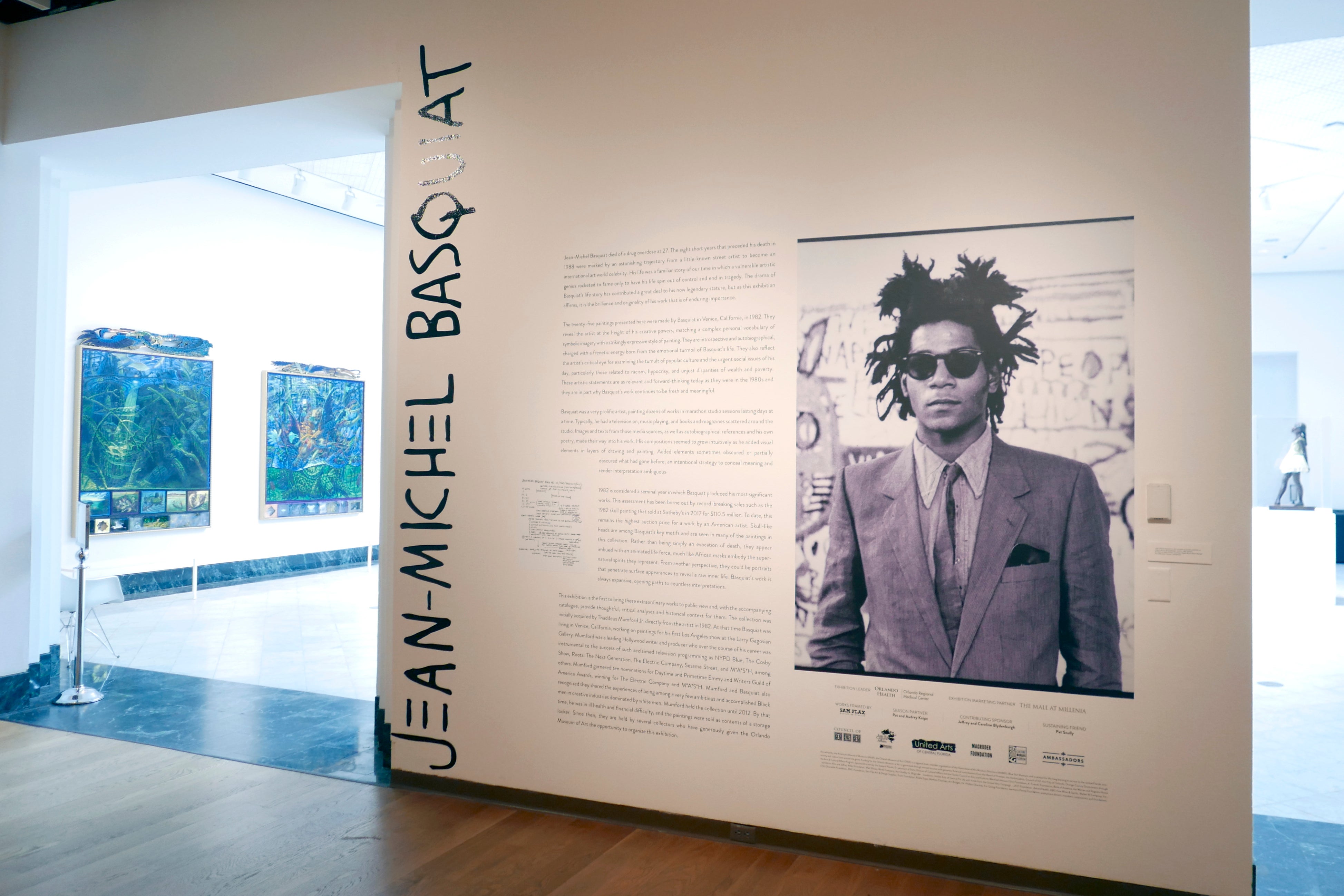Florida art museum sues former director over forged Basquiat paintings scheme
A central Florida art museum that was raided last year by the FBI over an exhibit of what turned out to be forged Jean-Michel Basquiat paintings has sued its former executive director and others, claiming they were part of a scheme to profit from the sale of the fake artwork

Your support helps us to tell the story
From reproductive rights to climate change to Big Tech, The Independent is on the ground when the story is developing. Whether it's investigating the financials of Elon Musk's pro-Trump PAC or producing our latest documentary, 'The A Word', which shines a light on the American women fighting for reproductive rights, we know how important it is to parse out the facts from the messaging.
At such a critical moment in US history, we need reporters on the ground. Your donation allows us to keep sending journalists to speak to both sides of the story.
The Independent is trusted by Americans across the entire political spectrum. And unlike many other quality news outlets, we choose not to lock Americans out of our reporting and analysis with paywalls. We believe quality journalism should be available to everyone, paid for by those who can afford it.
Your support makes all the difference.A central Florida art museum which was raided last year by the FBI over an exhibit of what turned out to be forged Jean-Michel Basquiat paintings has sued its former executive director and others, claiming they were part of a scheme to profit from the eventual sale of the fake artwork.
The Orlando Museum of Art filed the lawsuit Monday in state court against former CEO Aaron De Groft and others whom the museum says were involved in the scheme, seeking undisclosed damages for fraud, breach of contract and conspiracy.
The 99-year-old museum, also referred to as OMA, was left with a tattered reputation that resulted in its being put on probation by the American Alliance of Museums, the lawsuit said.
“OMA spent hundreds of thousands of dollars — and unwittingly staked its reputation — on exhibiting the now admittedly fake paintings," the lawsuit said. “Consequently, cleaning up the aftermath created by the defendants has cost OMA even more.”
Basquiat, who lived and worked in New York City, found success in the 1980s as part of the Neo-expressionism movement. The Orlando Museum of Art was the first institution to display the more than two dozen artworks said to have been found in an old storage locker decades after Basquiat’s 1988 death from a drug overdose at age 27.
Questions about the artworks’ authenticity arose almost immediately after their reported discovery in 2012. The artwork was purportedly made in 1982, but experts have pointed out that the cardboard used in at least one of the pieces included FedEx typeface that wasn’t used until 1994, about six years after Basquiat died, according to the federal warrant from the museum raid.
Also, television writer Thad Mumford, the owner of the storage locker where the art was eventually found, told investigators that he had never owned any Basquiat art and that the pieces were not in the unit the last time he had visited. Mumford died in 2018.
In April, former Los Angeles auctioneer Michael Barzman agreed to plead guilty to federal charges that he had created the fake artwork and falsely attributed the paintings to Basquiat.
De Groft had repeatedly insisted that the art was legitimate at the time of the exhibit last year. The court docket in Orlando didn’t list an attorney for De Groft.